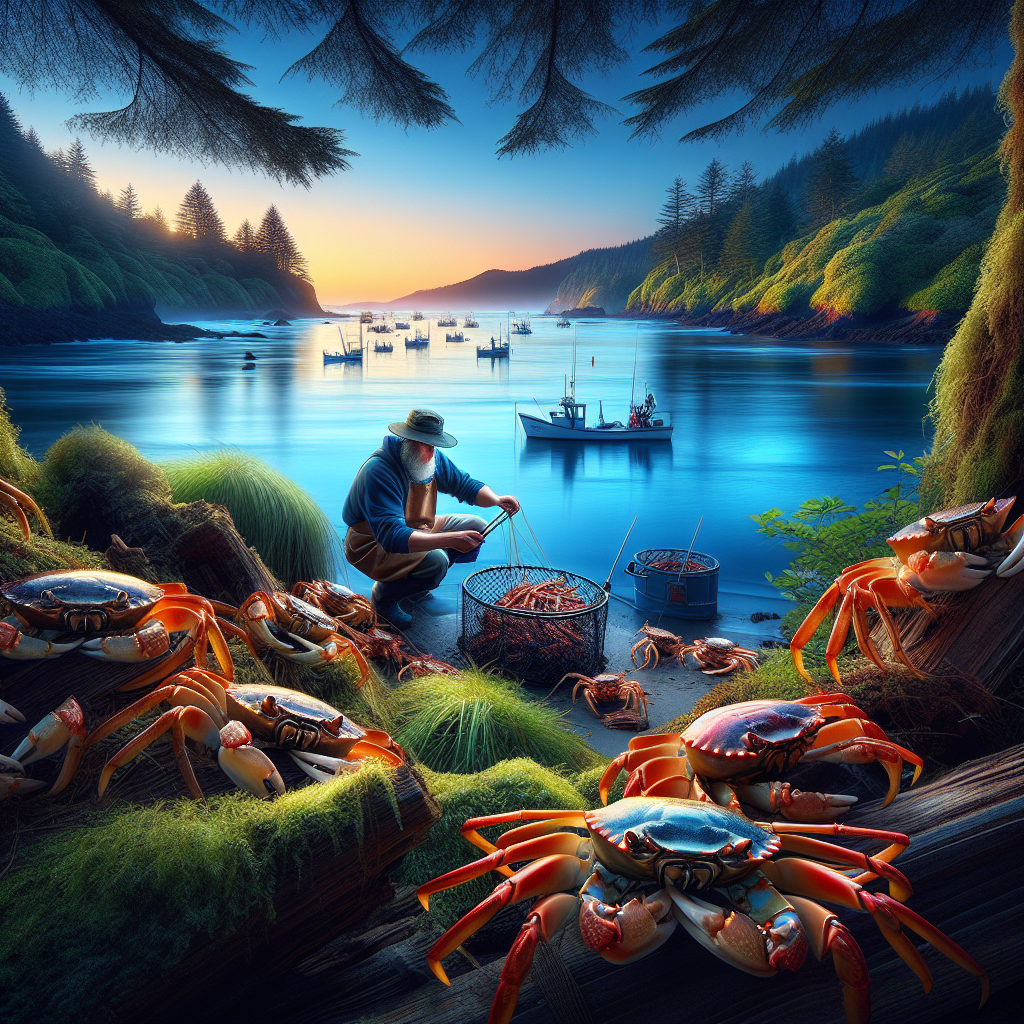The Ultimate Guide to Crabbing on the Oregon Coast
Welcome to the immeasurable charm of the Oregon Coast, friend, where the Pacific orchestrates a rhythmic symphony with the coast and its call lures you to partake in the iconic state pastime: crabbing. This guide has the luxury of local wisdom woven into its core, here to decode the know-how of crabbing.
Navigate the Crab Species Of Oregon’s Waters
Knowledge is oftentimes your best tackle for crabbing, and it all begins by recognizing the two main species that dwell in Oregon’s waters: the Dungeness and red rock crabs. Remember, crabbing isn’t a year-round activity. Dungeness crabs are often bountiful during winter, from December through late February. The red rock crabs, though smaller and less meaty, are available most of the year, making crabbing feasible even outside peak season.
Choose Your Companions- Crabbing Bays
Oregon looks after its crab-lovers by providing a milieu of bays suitable for crabbing, each carrying its own uniqueness. Nestucca Bay near Pacific City and the famed Netarts Bay close to Tillamook are often favored by locals for their less crowded environment. For an adventure-soaked crabbing day, hop onto charter boats from the Port of Newport or Garibaldi Marina. And of course, there’s the generous Yaquina Bay, which is often abundant with Dungeness crabs.

Crabbing Equipment and Their Local Stores
Don’t fret if you arrive under-equipped; Oregon’s local businesses will have your back. Rent or purchase crabbing equipment from local gems like Kelly’s Brighton Marina in Rockaway Beach or Englund Marine in Astoria. The basics usually include a crab pot or a ring net, a gauge to measure your catch, appropriate bait, and a buoy.
The How-To of Crabbing Rules
Crabbing in Oregon isn’t just a spontaneous fling; it has its rules to ensure sustainable enjoyment for future generations. Before setting sail, picking up an Oregon Shellfish license from the Oregon Department of Fish and Wildlife is obligatory for crabbers ages 12 and up. Measure your crabs carefully; for Dungeness crabs, the Oregon regulations require a minimum size of 5 ¾ inches, while red rock crabs should measure at least 4 inches.
Weather and Tide Conditions
The local adage goes, “You can’t trust Oregon Coast’s weather, but you can trust it to change”. Bringing an extra jacket even on a sunny morning isn’t a bad idea. Foggy conditions can roll in fast, as can afternoon rains. Checking the tide tables, even for bay crabbing, is a good habit. Remember, crabbing during slack tide is usually the least productive. Two hours before high tide till two hours after often results in the best catch.
Culinary Consequence
Once you’ve got your crabs, what do you do with them? Likely the best meal you’ll have is the one you cook yourself with the freshest catch of the day, right on the beach. A propane stove and a large pot filled with salty sea water are all you need. If that’s not an option or you’re craving a gourmet treat, no place aces the art of cooking crabs better than Local Ocean Seafoods in Newport.
Family Fun Fairs and Crabbing Events
Crabbing, when done correctly, can be a family-bonding activity. If you’ve young ones tagging along, plan your vacations around crabbing events like the Charleston Crab Feed in February or Annual Crab Krack in Newport held in January. It’s entertainment, education, and a fantastic coastal meal, all rolled into one!
Be a Crab Friendly Tourist
As guests to these creatures’ home, leaving it cleaner than we found it should be of utmost importance. Dispose of the monofilament line, bait bags, and any garbage properly. This way, the Oregon Coast remains the beautiful retreat it is for years ahead.
End Note: Everlasting Ebb and Tides
Oregon, the land of lush hideouts, towering mountains, and captivating coastlines, is timeless in its charm. Just like her tides, she invites you to revel in the ebb and flow of crabbing. So, prep your gear, mark your tide timings, and venture forth into those yielding waters for those prized catches. Enjoy!
